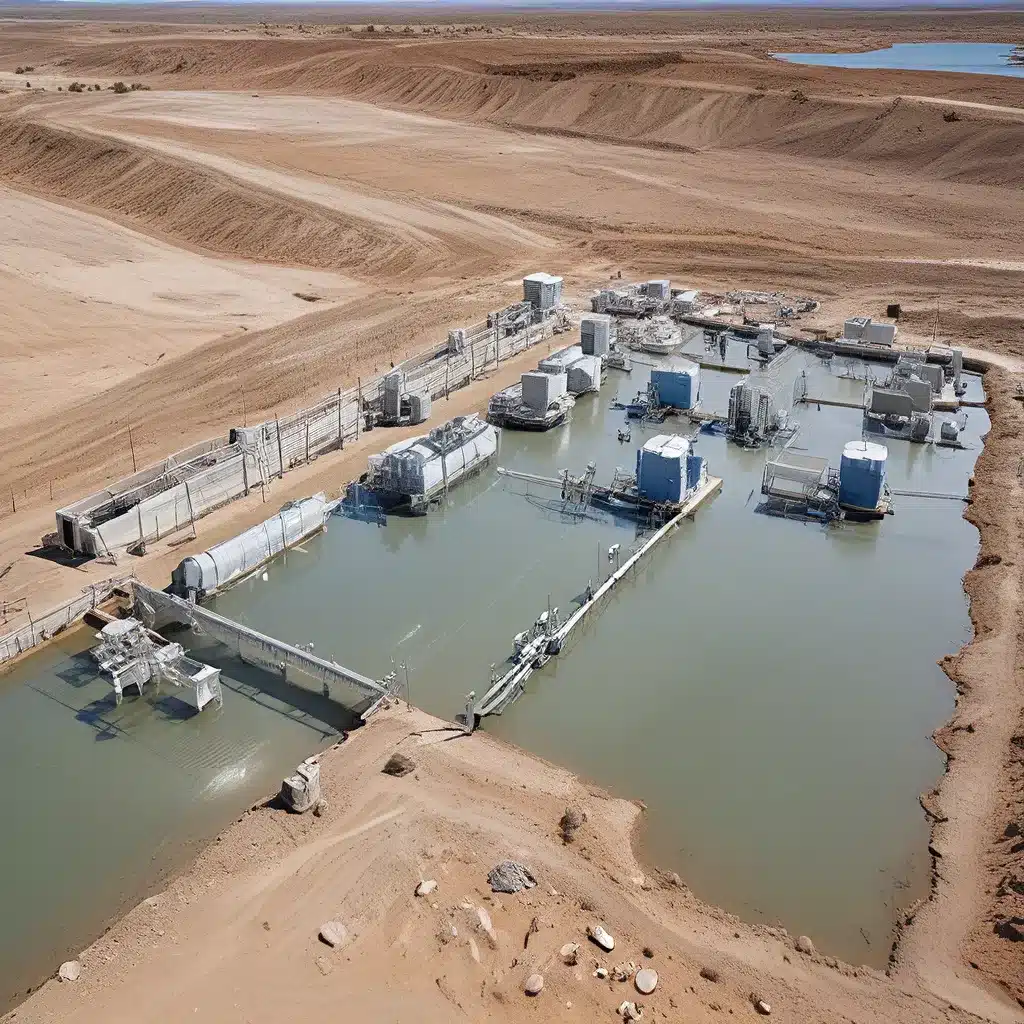
The future may hold many surprises, but one thing is certain – our insatiable thirst for clean, reliable water will only continue to grow. As our world becomes increasingly unpredictable, the need for innovative water treatment solutions has never been more critical. Join me on a journey as we explore the cutting-edge technologies and strategies that will help us quench the thirst of generations to come.
Preparing for the Unknown
If there’s one thing we can predict about the future, it’s the unpredictability of it all. From the impacts of climate change to the emergence of new contaminants, the water treatment challenges of tomorrow are likely to be vastly different from those we face today. But that doesn’t mean we’re powerless to prepare.
Take the concept of “sponge cities,” for example. Pioneered in China and gaining traction around the world, this approach to urban development seeks to mimic the natural water absorption and storage capabilities of wetlands and forests. By incorporating green infrastructure like permeable pavements, rain gardens, and urban forests, sponge cities can help manage stormwater runoff, recharge groundwater supplies, and reduce the risk of flooding. As Dake Rechsand, a leader in the sponge city movement, explains, “Sponge cities are not just about water management – they’re about creating more livable, sustainable, and resilient urban environments.”
But sponge cities are just one piece of the puzzle. As we look to the future, water treatment professionals will need to adopt a multifaceted approach, drawing on a diverse array of technologies and strategies to tackle the unpredictable challenges that lie ahead.
Harnessing the Power of Digital Transformation
One of the most exciting frontiers in water treatment is the digital transformation sweeping through the industry. According to a report by Arthur D. Little, “Water utilities are poised for a digital revolution, with new technologies and data-driven insights unlocking significant value across the entire water cycle.”
From smart sensors that can detect leaks and monitor water quality in real-time to machine learning algorithms that can optimize treatment processes, digital tools are empowering water utilities to become more efficient, resilient, and responsive. And as the Internet of Things (IoT) continues to expand, the opportunities for data-driven water management will only grow.
But the digital transformation isn’t just about technology – it’s also about changing mindsets and organizational cultures. As the Arthur D. Little report notes, “Utilities must adopt a more agile, collaborative, and customer-centric approach to unlock the full potential of digital transformation.”
Embracing the Circular Economy
Another key strategy for addressing the water challenges of the future is the circular economy. Instead of the traditional linear model of “take, make, waste,” the circular economy aims to keep resources in use for as long as possible, extracting maximum value from them, and then recovering and regenerating products and materials at the end of their service life.
In the context of water treatment, this might involve technologies that enable water reuse, nutrient recovery, and energy generation from wastewater. For example, in Argentina, a pilot project is exploring the use of constructed wetlands to treat wastewater and produce biofuel. By harnessing the power of natural ecosystems, this innovative approach not only purifies the water but also creates a sustainable source of renewable energy.
But the circular economy isn’t just about technology – it’s also about changing the way we think about and manage water resources. As Inland Waters, a leading water treatment and environmental services company, notes, “The key to a sustainable water future is to embrace a holistic, systems-based approach that recognizes the interconnectedness of water, energy, and resource use.”
Adapting to Unpredictable Challenges
Of course, even the best-laid plans can be thrown off-course by unexpected events. Whether it’s a natural disaster, a pandemic, or a sudden shift in water demand, the water treatment challenges of the future are likely to be as dynamic and unpredictable as the world around us.
But that doesn’t mean we’re powerless to adapt. In fact, building resilience and adaptability into our water systems may be one of the most important strategies for addressing the challenges of the future.
One way to do this is by investing in flexible, modular water treatment technologies that can be easily scaled up or down depending on changing needs. Another approach is to foster collaborative networks and knowledge-sharing platforms that can help water professionals stay ahead of emerging threats and share best practices for navigating complex challenges.
And let’s not forget the power of the human element. As the educators at LearnToConserve.com in Argentina emphasize, “Engaging and empowering local communities is essential for building resilient, sustainable water systems. When people have a stake in the outcome, they’re more likely to be active participants in finding solutions.”
Embracing the Unpredictable Future
As we look to the future, one thing is clear: the water treatment challenges we’ll face will be more complex, dynamic, and unpredictable than ever before. But that’s not a reason for despair – it’s an opportunity to embrace the power of innovation, collaboration, and resilience.
By harnessing the latest digital technologies, embracing the circular economy, and fostering adaptable, community-driven water systems, we can position ourselves to thrive in the face of whatever the future may bring. It won’t be easy, but as water treatment professionals, we have a critical role to play in quenching the thirst of generations to come.
So let’s dive in, roll up our sleeves, and get to work. The future may be uncertain, but our commitment to safeguarding the world’s most precious resource will never waiver. Together, we can create a water-secure future that is resilient, sustainable, and full of possibility.


